Extatosoma tiaratum a photo on Flickriver
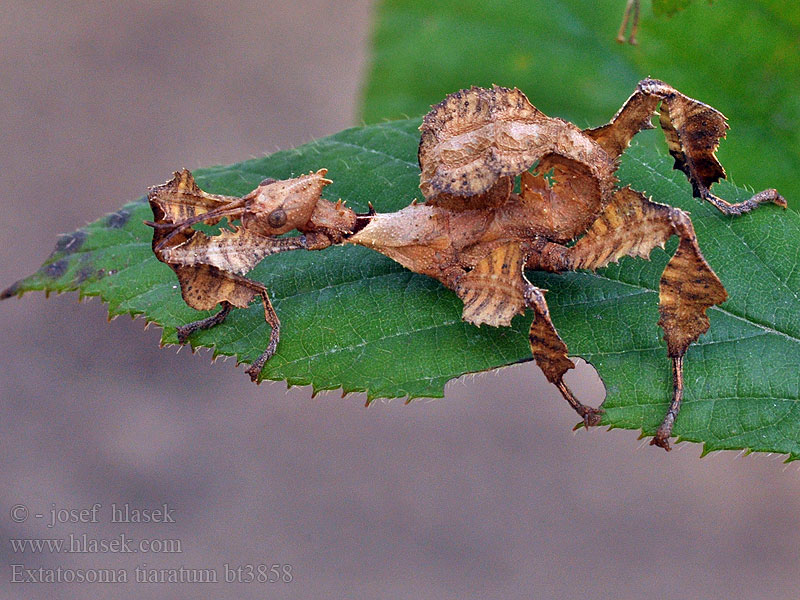
Extatosoma tiaratum Straszyk australijski
E. tiaratum are generalists, feeding on a variety of eucalyptus ( Brock and Hasenpusch 2009), and may forage on different tree species during their life, so it is unlikely that they would benefit from matching the movement of one type of plant. Therefore, we would not expect a perfect motion overlap between the insect and the background plants.
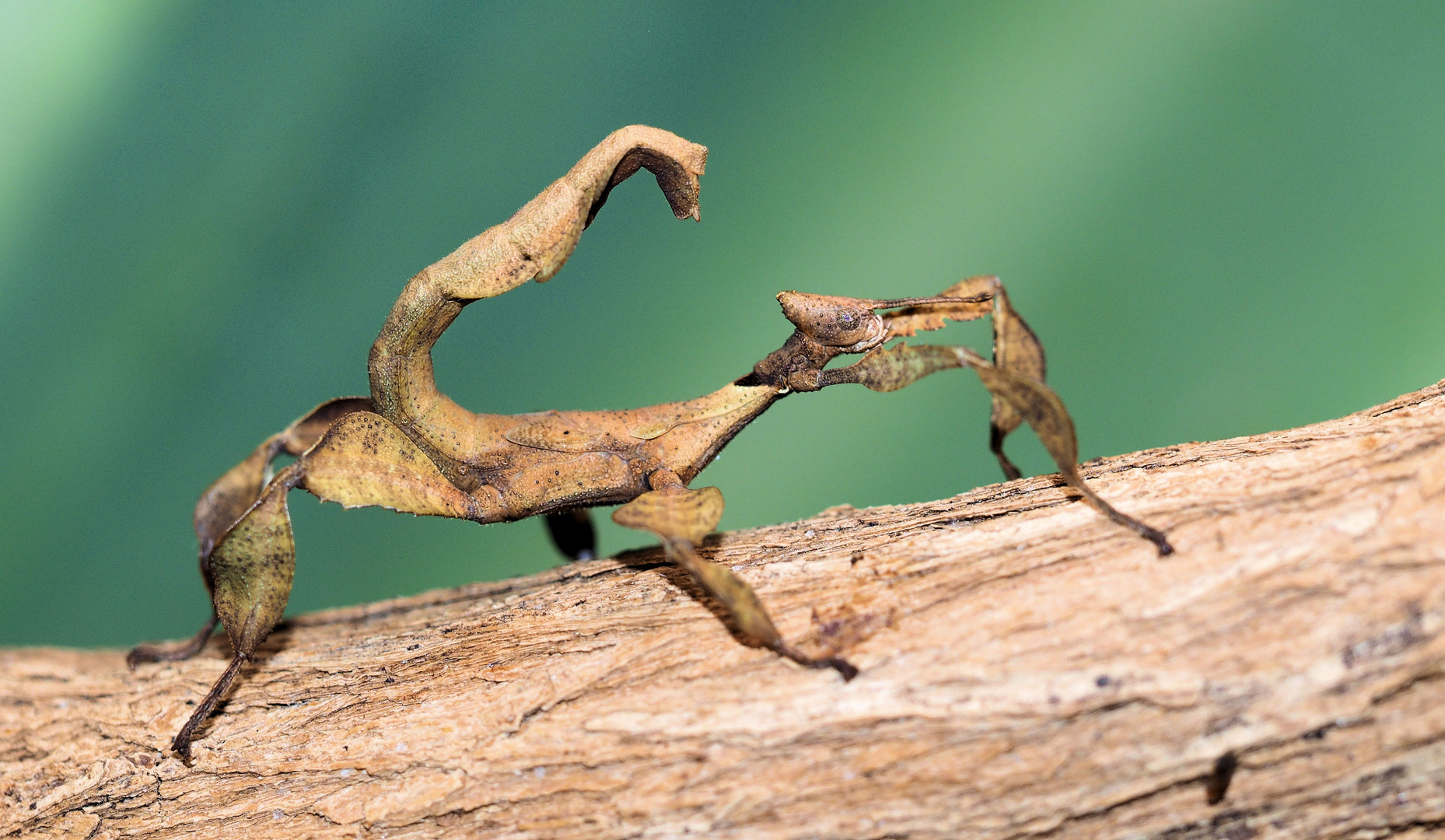
Extatosoma tiaratum Jungtier Foto & Bild fotos, makro, natur Bilder auf
Source: Wikipedia. Extatosoma tiaratum, commonly known as the giant prickly stick insect, the spiny leaf insect, Macleay's spectre, or the Australian walking stick, is a large species of stick insect endemic to Australia. The species has the Phasmid Study Group number PSG9.

Hatching spiny leaf insect nymph (Extatosoma tiaratum) YouTube
The Spiny Leaf Insect has some fascinating twists in its life cycle. The flightless female, which can grow to 160 mm, drops her eggs at the base of trees. She does not need to mate to produce eggs (parthenogenesis), but any hatchlings will all be females that are genetically identical to her. If she mates with a much smaller winged male, the.

Extatosoma tiaratum Cuidando Bichos
Post-hatch dispersal in Macleay's spectre stick insect, Extatosoma tiaratum. (A). Right: schematic summary of E. tiaratum life cycle, showing the transient spatial niche of newly hatched nymphs which ascend from the forest floor to tree canopies. (B) Loss of ant-mimicking coloration during the first 3-5 days after hatching.

LICHEN Stick Insect (Extatosoma tiaratum "Innisfail") Stick insect, Stick bug, Insects
The giant prickly stick insect (Extatosoma tiaratum) is one of the most popular stick insects kept as pets. This stick insect is pretty large and has beautiful camouflage which is typical for phasmids. In this practical care guide, we will discuss how you take good care of your giant prickly stick insect. We will discuss housing, creating the correct environment, the best feeding practice and.
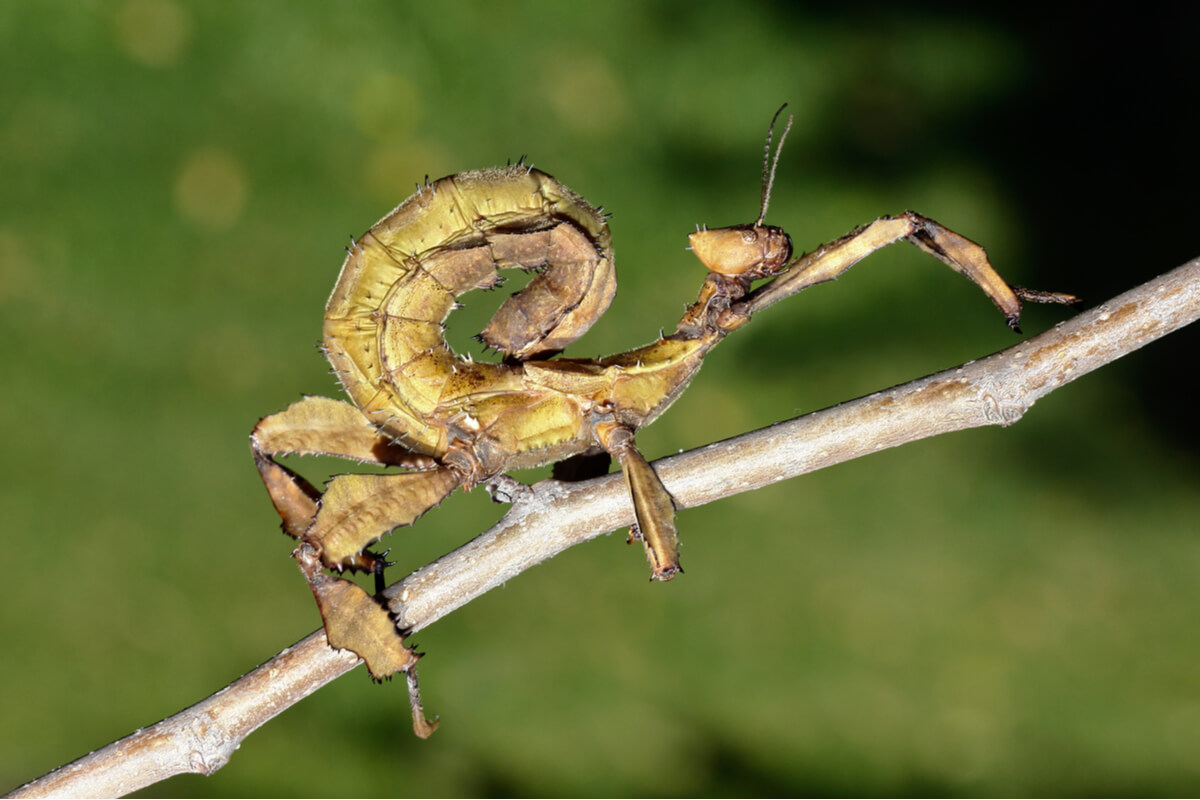
Extatosoma tiaratum cuidados y cría en cautiverio Mis Animales
PSG Number 9: Species Name Extatosoma tiaratum: Author (Describer) Macleay: Year Described 1827: Subfamily Extatosomatinae: Locality Australia: Culture Status
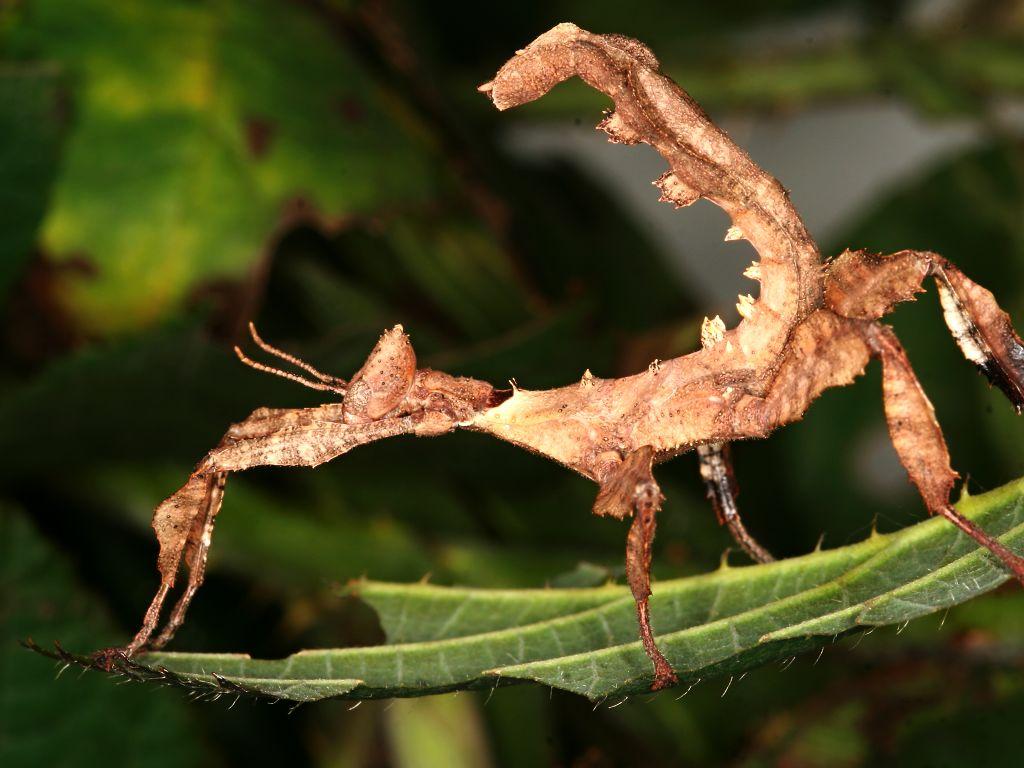
Extatosoma tiaratum photo Reptarium
The Extatosoma Tiaratum can go with a humidity of 60% to 80%. Especially in winter, when the air is dry from heating, you should mist the enclosure regularly to make sure that the pet stick bug has enough humidity in the tank to be able to molt properly. You can spray some bottled spring water or de-chlorinized tap water on the substrate, the.

Spiny Leaf Insect Extatosoma tiaratum Adult female YouTube
Extatosoma tiaratum skin shedding from hatching to adulthood. The Phasmid Study Group Newsletter (PSG Newsletter) 49:7. Life Stories of Australian Insects, Dymock's Book Arcade, Sydney 34, fig Brock & Hasenpusch. 2007. Studies on the Australian stick insects (Phasmida), including a checklist of species and bibliography, Zootaxa, Magnolia.

EXTATOSOMA TIARATUM INCUBATION AND NYMPH CARE YouTube
Extatosoma tiaratum. ( Macleay, 1826) Extatosoma tiaratum, commonly known as the spiny leaf insect, the giant prickly stick insect, [2] Macleay's spectre, [3] or the Australian walking stick, is a large species of Australian stick insect. [4] [5] The species has the Phasmid Study Group number PSG9. [6]
One of my extatosoma tiaratum r/insects
Life Cycle [] Extatosoma tiaratum are able to reproduce both parthenogenetically or sexually The eggs hatch after approximately 4 months. Eggs that are laid via parthenogenesis can take more than 9 months before the emergence of nymphs. The juvenile nymphs are usually black in colour with slight hints of red on the abdomen.
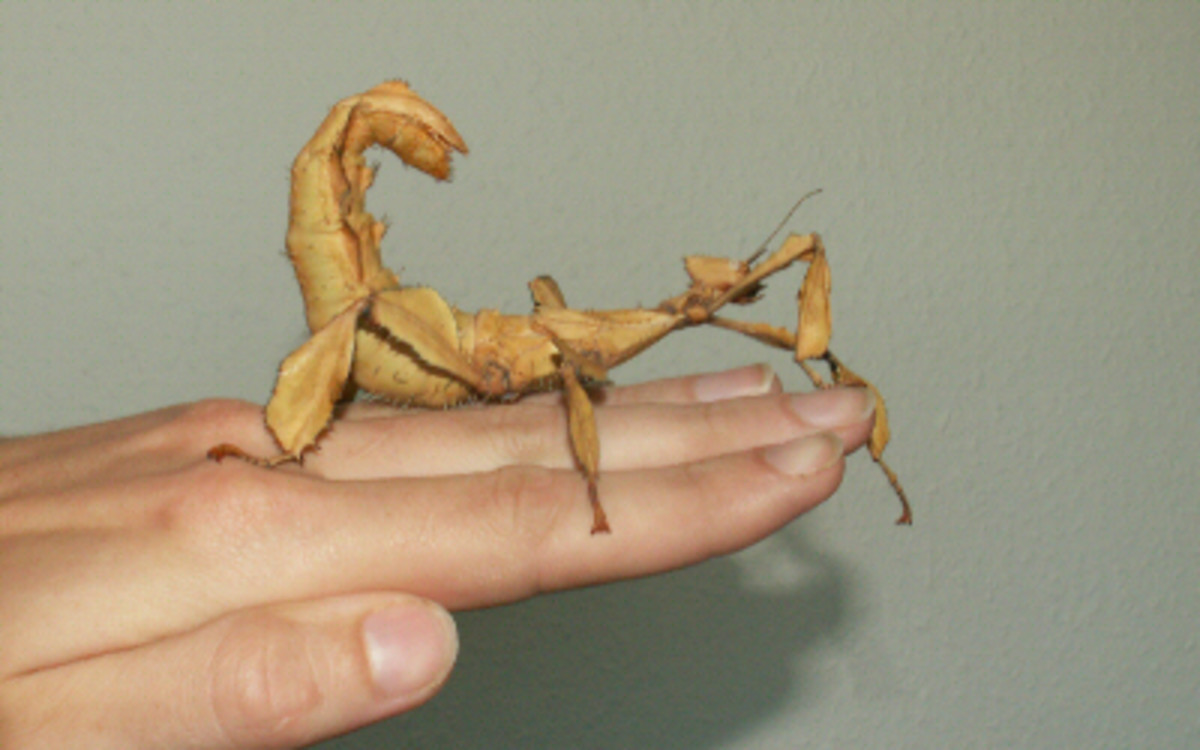
Fascinating Phasmids PetHelpful
Right: schematic summary of E. tiaratum life cycle, showing the transient spatial niche of newly ha tched nymphs which ascend from the forest floor to tree canopies.

Extatosoma tiaratum, el llamado insecto líquen. ¡Descúbrelo!
Camouflage can be part of every stage of a phasmid's life. The giant prickly stick insect (Extatosoma tiaratum) imitates crumpled foliage as an adult, its nymphs look like ants and then bark.

Extatosoma Tiaratum 3 day old Extatosoma Tiaratum. The eye… Flickr
One interesting Australian phasmid is the Spiny Leaf Insect (Extatosoma tiaratum), also called Macleay's Spectre Stick Insect. The females of this species have very large bodies but very short wings and are unable to fly. The males are long and slim with fully developed wings.

Giant Prickly Stick Insect / Macleays Spectre (Extatosoma tiaratum) Care Sheet Keeping Exotic Pets
Spiny Leaf Insect, Extatosoma tiaratum. Spiny Leaf Insects are stick insects - also known as phasmids. Adult Spiny Leaf Insects are more like dead leaves than sticks however, and are very hard to spot in the wild as they hang motionless from foliage. They are leaf-eaters like other phasmids, and are found in the north east of Australia, where.
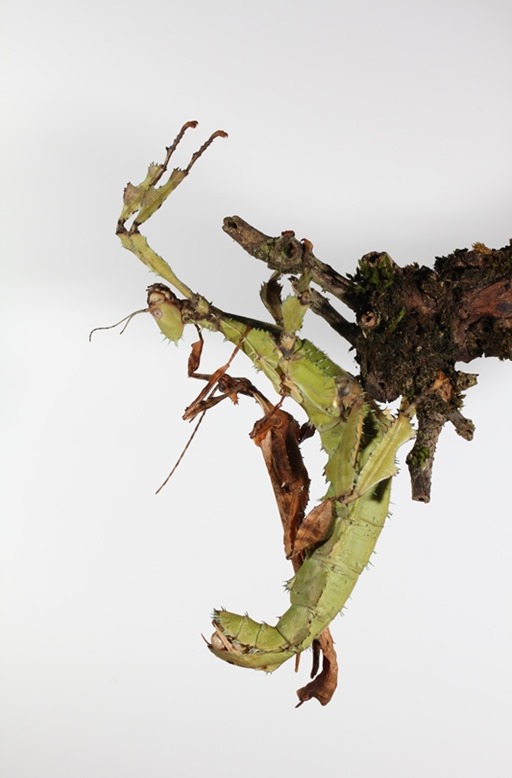
Extatosoma_tiaratum.jpg Insectes & Compagnie
The Spiny Leaf Insect (Extatosoma tiaratum) They blend in well and are very hard to spot in the wild as they hang motionless from foliage. Their diet is fresh foliage just like other phasmid species, and are found in the north east of Australia, where they feed on a variety of plants types in the wild. They have a very interesting reproductive.

Extatosoma tiaratum Cedric Vaucher Flickr
Spiny leaf insects, also known as the Macleay's spectre are scientifically known as Extatosoma tiaratum. It is a type of large Australian stick insect, which are endemic to Australia.. Here, the life cycle begins as a live insect with the oviposition method when the female deposits her eggs. During this process, the adult female will either.